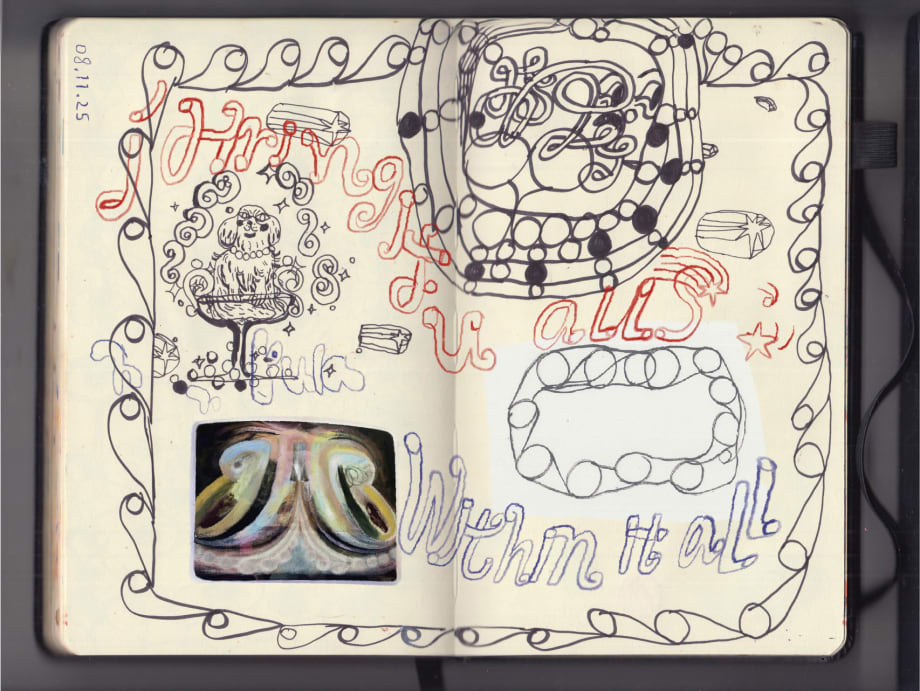Helga Páley Friðþjófsdóttir: Í hringiðu alls / With In It All · Þula
Helga does not call herself a painter per se. She is a drawer. She mentions Amy Sillman who is also a painter who is a drawer. In her book, Faux Pas, Sillman writes about how there is a difference between painters who are “painters” and those who are “drawers.” “Painters” are like eagles: canny and noble birds who soar above us, doing something enlightened, getting the big picture. They are calculating and often have an idea (or concept) in place before they start to paint. (If we read art history we see the eagle taking up a lot of space.)
We are in Helga Páley’s studio and we are talking. She tells me about the circles, the colours, the small paintings, the big paintings, apartments; she talks about games, how there are autumn colours in these works, about light, how all of a sudden she can see into the future when the painting—what she needs to do to it—shows itself.
Helga Páley Friðþjófsdóttir (b. 1987) earned her BA degree from the Iceland University of the Arts in 2011 and works as a visual artist in Reykjavík. Since graduating, she has held numerous solo exhibitions and participated in group shows both in Iceland and internationally.
Painting has long been central to her artistic practice, a process of exploration where form, color, and texture take shape through intuition and repetition. She allows ideas to develop slowly, layering paint and letting images emerge over time. Through this process, stories unfold - built up, scraped away, and reworked until they settle into place on the canvas.
Recent solo exhibitions include Loaded Beach at Akureyri Art Museum (2025), Velvet Curtains at Listval (2024), and Janitor’s Big Hit at Þula (2021). Group exhibitions include Art is Our Only Hope! at Reykjavík Art Museum (2025), Some Paintings at The Living Art Museum (2024), and Summer Salon at Alice Folker Gallery, Copenhagen (2024). Helga Páley participated in CHART Art Fair, Copenhagen in 2025. Her work has also been shown in Berlin, Basel, Helsinki, and Stockholm.
She has participated in residencies and artist-run initiatives, including TAXI Residency in Denver (2019), Kunstschlager Gallery (2013–15), and the board of Sequences - Real Time Art Festival (2016–17).

